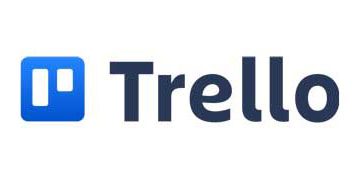Are Certification Bodies all the same?
Many companies select an Accredited Body (or Certification Body) on the basis of having the most recognised certification marks. Those marks can justify the purchasing decision, but there can be good reasons to consider others. Apart from the different marks, the certificate they issue has the same status whichever Certification Body issues it. With this in mind, you might want to consider other factors when selecting a Certification Body.
Why companies choose Certification?
Sometimes companies consider certification as a marketing tool – to help differentiate them from their competitors. However, it is usually undertaken to allow a company to tender or supply to customers who set certification as a minimum requirement. Certification can also simplify the tendering process. You can often just provide your certificate rather than filling in long questionnaires about policies and procedures. Some companies decide to obtain certification because their company will benefit from the process, but this is rare.
Financial considerations
Let’s get down to the knitty-gritty, Certification is an additional cost. Trying to financially justify that cost without opening up new markets or increasing sales is difficult. However the cost of certification is not fixed. However there are rules governing how a Certification Body determines the number of days for auditing. This is based on
- the size of the operation being audited
- the number of persons (or the number of different roles within the company).
So a Certification Body can count 5 persons with the same role as a single person. This is one reason why quotations can vary.
The costs are in bands, so 1-5 employees, 5-10, etc. Arguing over a couple of people in your headcount is unlikely to vary the band that’s selected. Ask the Certification Body what band they put you in so you can compare. If two Certification Bodies put you in different bands this may have a big impact on costs.
The other thing that vary are daily charge rates for auditors. You will find that some Certification Bodies are more willing to negotiate charge rates than others. It is wise to get more than one quotation and never accept a Certification Body’s first price. They can, and do compete with each other on price. And this applies to the better known certification marks too.
Audit Schedule
The rules that govern the minimum number of auditing days, can be implemented in different ways. Once certified the Certification Body sets a routine surveillance audit, but this can be every 6 months, 9 months, or 12 months. As long as they audit at least once every 12 month period a Certification Body may let you specify the frequency. This will in part dependent on your audit performance. If you do well they are more likely to use a longer lead time. Not many companies specify this frequency and even fewer are aware that it can be negotiated. Some Certification Bodies have started asking companies what their preference is. Sometimes you can influence how those days are spent, by suggesting a particular area for the audit to focus on. You can also negotiate how many auditors come to site. If you are scheduled for 4 days of auditing this could be 4 auditors in 1 day, 2 auditors for 2 days or 1 auditor for 4 days. Where you have a preference discuss this with your Certification Body.
Audit Results
Certification Bodies produce different style audit reports. There are rules governing the minimum requirement, but outside those it is open to interpretation. Even the way a Certification Body categorises it’s findings can vary. As far as we are aware they all have Non-compliances or Non-conformances – a deficiency against a requirement. Most also assign weightings depending on severity of the Non-conformance (e.g. Major and Minor). There are many other types of findings: Area of Concern, Opportunity for Improvement, Observation, Comments, etc. These can all have different meanings. What is common is that the reports explain in detail what the findings mean. Don’t think you have to follow the Certification Body’s categorisations in your own management system. We personally favour a very basic approach for most companies which clearly identifies whether or not action is required.
- Observation (or similar name)
a positive or negative finding that could lead to an improvement. - Non-conformance
where an organisation is not conforming with requirements and action is mandatory.
The target for closure can vary, but this is typically based on the severity of the finding. A shorter turnaround will be expected for major findings. Less severe findings may not be reviewed until the subsequent audit.
You may want ask to see an example audit report when selecting your Certification Body. When they issue a report, you have to act on it, so you might want to choose a Certification Body whose report you favour.
List of Australian Certification Bodies
The following list provides details of Certification Bodies and the approximate number of ISO 9001 Certification customers as of November 2012. Please note this data is static data and as such may not represent current information as certification bodies change, as do the number of clients they have.
| SAI | SAI Global P/L |
3781 |
| NCSI | NCS International P/L |
843 |
| BSI | BSI Group P/L |
796 |
| SGS-SSC | SGS Systems Services Certification P/L |
551 |
| BV | Bureau Veritas Australia P/L |
486 |
| LRQA | Lloyds Register Quality Assurance Limited |
473 |
| Globalmark | Global-Mark P/L |
438 |
| QMS CS | QMS Certification Services P/L |
331 |
| TQCSI | TQCS International P/L |
321 |
| ICL | International Certifications Limited |
290 |
| Sci Qual | Sci Qual International P/L |
260 |
| ISC | International Standards Certifications P/L |
231 |
| DNV | DNV Certification P/L |
223 |
| CACS | Compliance Australia Certification Services |
203 |
| DLCS | Davis Langdon Certification Services |
192 |
| BPC | Best Practice Certification |
131 |
| GC | Global Certification P/L |
129 |
| QCSE | Quality Control Services (Environmental) P/L |
103 |
| IHCAC | Institute for Healthy Communities Australia Certification P/L |
71 |
| SC | Sustainable Certification P/L |
56 |
| Equal | Equal Assurance P/L |
48 |
| DQS | DQS Certification P/L |
28 |
| IQC | Integrated Quality Certification Pvt Ltd |
28 |
| ECAAS | ECAAS Certification P/L |
14 |
| AUS-QUAL | AUS-QUAL P/L |
11 |
| Telarc | Safety in Mines Testing and Research Station |
11 |
| ICGC | ICG Compliance P/L |
10 |
| Certex | Certex International P/L |
9 |
| HDAA | Health and Disability Auditing Australia P/L |
2 |
| SA | Southpac Aerospace P/L |
2 |
| ASUREQUALITY | AsureQuality Limited |
1 |


